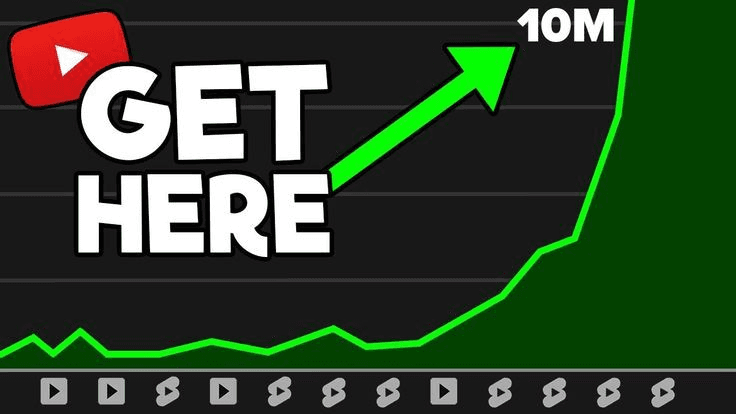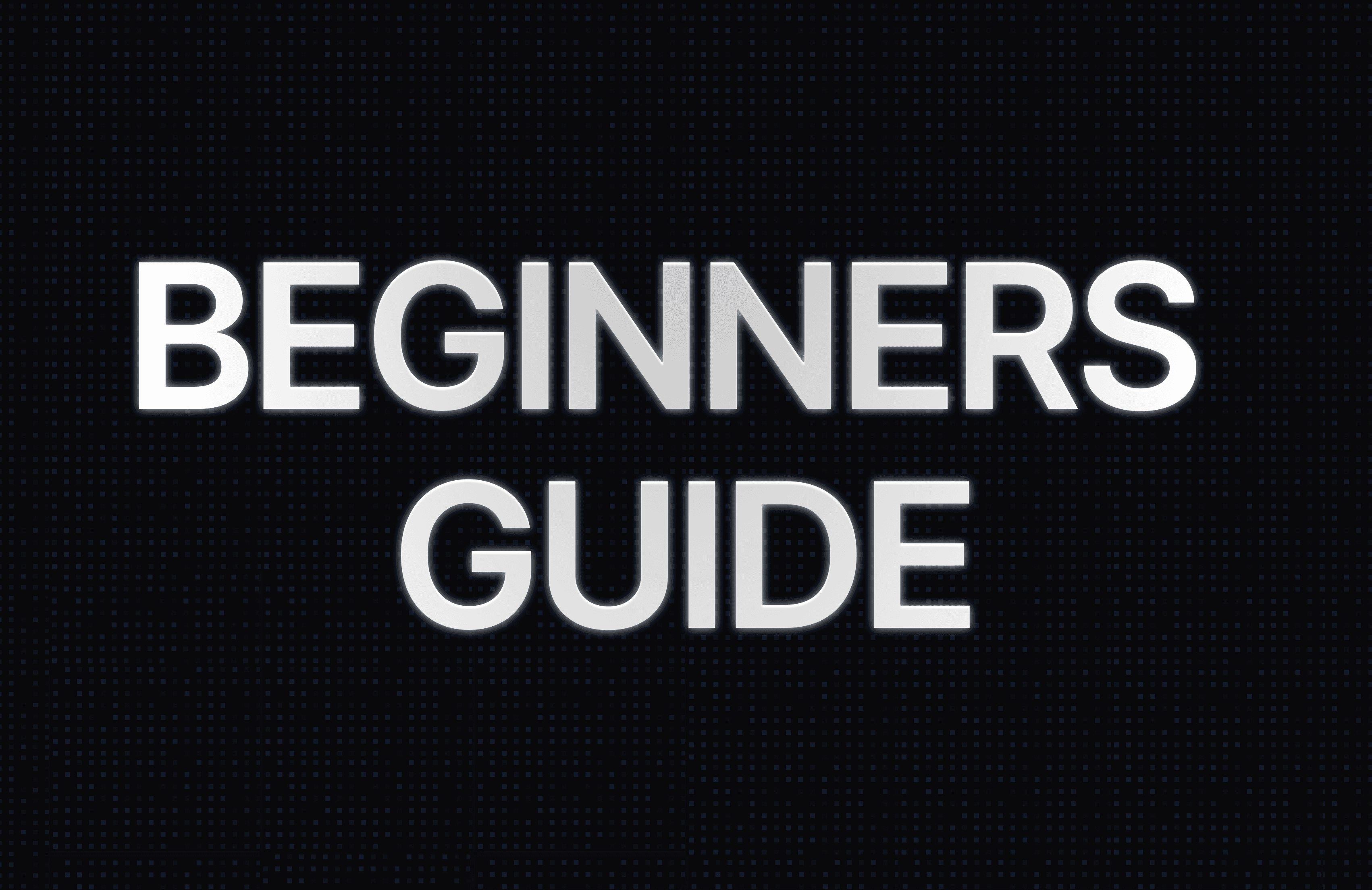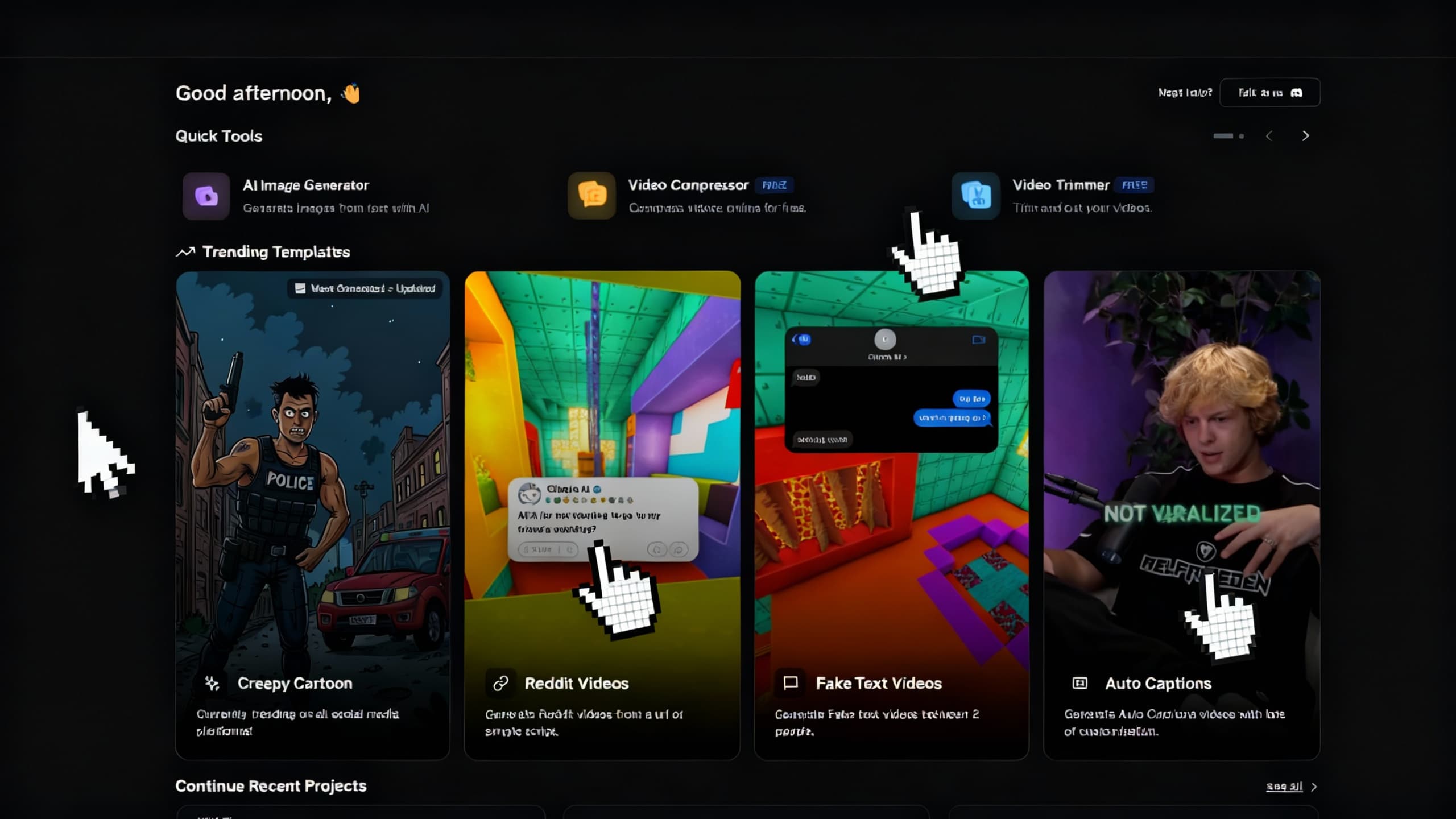Video Clipping: The Ultimate Guide to Getting Started
In 2024, video clipping has transformed from a niche editing task into one of the most accessible and profitable ways to earn income online.

In 2024, video clipping has transformed from a niche editing task into one of the most accessible and profitable ways to earn income online. Fueled by the massive growth of platforms like TikTok, Instagram Reels, and YouTube Shorts, today’s audiences are obsessed with short-form, high-impact content. These 15-60 second clips aren't just scroll-stoppers, they’re content currency in a fast-paced, attention-driven digital economy.
Gone are the days when creators needed a full production team, expensive cameras, or on-camera charisma to go viral. With the rise of AI automation tools and no-face content formats, even complete beginners can start clipping and posting videos that rack up views, engagement, and revenue in days, not months.
The Rise of the Video Clipping Economy
The “clipping economy” refers to the ecosystem of creators, editors, and AI tools who repurpose, remix, or create short-form videos designed specifically for high retention and shareability. Whether pulling highlights from long-form podcasts or scripting original content using AI, clipping enables:
Faster content output
with minimal effort
Higher reach and discoverability
on short-form platforms
More monetization opportunities,
even without a large following
Many creators are now running entire faceless brands using video clipping as their main content engine, earning anywhere from a few hundred to thousands of dollars per month from ad revenue, affiliate sales, brand deals, and product funnels.
Why Audiences Love Short Clips
Today’s online viewer is busy, distracted, and mobile-first. That’s why platforms reward short-form videos that:
Grab attention within the first 1-3 seconds
Deliver clear value or entertainment quickly
Encourage likes, comments, and shares
Fit seamlessly into a never-ending scroll experience
This is exactly where clipping shines, it condenses stories, reactions, education, or humor into rapid, engaging moments that align perfectly with how users consume content today.
Who Should Be Paying Attention?
Whether you’re:
A beginner looking to start a side hustle
A YouTuber repurposing long-form content
A business owner marketing through vertical video
Or a faceless content creator building niche pages
Video clipping offers one of the lowest-barrier, highest-leverage opportunities in the content space today.
What is Clipping?
Video clipping is the process of extracting short, impactful moments from longer videos and repackaging them into bite-sized content. This form of micro-content appeals to modern audiences who prefer quick, easily digestible entertainment and information. Studies show that average watch times on TikTok, Reels, and Shorts are under 30 seconds, proof that short-form reigns supreme. Viral clips often highlight surprising moments, emotional reactions, or trending memes, making them ideal for sharing and rapid growth.
In 2024, successful clippers understand viewer psychology: people scroll fast, want immediate value, and engage more with content that hooks them in the first few seconds. Whether you’re repurposing podcasts, webinars, gaming streams, or live events, the goal of clipping is the same: grab attention quickly, drive watch time, and feed the algorithms that reward high retention and engagement.
Tools You Need
Free Tools: Apps like CapCut and Canva offer basic clipping, captions, and templates, great for beginners with no budget.
Paid Tools: Software like Adobe Premiere Pro and Final Cut provides advanced editing, better transitions, and pro-level export options.
Automation Software: Tools like Clippie AI automate subtitles, voiceovers, transitions, and allow you to produce clips at scale.
Hardware: Budget creators can start with smartphones; higher-end creators may prefer mirrorless cameras, dedicated microphones, and ring lights.
Pros & Cons: Free tools are accessible but may include watermarks and limited features; paid tools unlock full customization but come with steeper learning curves and costs.
Choosing the Right Platform
TikTok: Known for rapid viral potential and a younger demographic. Monetization options include the Creator Fund, brand sponsorships, and in-app shopping features.
YouTube Shorts: Offers the most robust payout programs through ad revenue sharing and Shorts bonuses. The Algorithm favors retention and watch time.
Instagram Reels: Strong for brand collaborations, influencer marketing, and affiliate sales. The algorithm emphasizes consistency and trending audio.
Key differences: TikTok rewards immediate viral traction, YouTube focuses on long-term channel growth, and Instagram supports broader brand building. Latest data shows TikTok creators earn between $0.02–$0.04 per 1000 views, while YouTube Shorts averages slightly higher due to ad revenue splits.
Growth trends: TikTok remains the fastest for viral spikes, YouTube Shorts sees steadier growth curves, and Instagram Reels excels for cross-promotion with static posts and Stories.
Simple Clipping Techniques
Creating viral-ready short-form content doesn’t require fancy equipment or hours of editing; it requires clarity, pacing, and strategic presentation. Whether you're using footage from a podcast, webinar, or a faceless AI-generated script, the techniques below will help you hook viewers, boost retention, and drive consistent engagement on platforms like TikTok, YouTube Shorts, and Instagram Reels.
Here’s a deep dive into proven clipping techniques that even beginners can master:
✅ 1. Scripting & Storytelling That Hooks
The success of a clip often comes down to the first 3 seconds. This is when your content either grabs the viewer’s attention or loses them to the scroll. Use storytelling structures designed for short-form:
Hook → Context → Payoff: Start with a powerful question, jaw-dropping fact, or unexpected statement.
Relatability + Curiosity: Use phrasing like “You won’t believe this…” or “Here’s a trick no one tells you…”
Use subtitles or headlines as visual hooks immediately (especially if your content is faceless).
Keep the story tight, aim for 15-30 seconds max, unless your platform supports longer watch time retention.
Example hooks:
“This one mistake is costing you money every day…”
“Here’s how I made $1,200 with 3 clips in a week.”
✅ 2. Pacing That Keeps Viewers Watching
Attention spans are short, and your editing style needs to reflect that.
Trim aggressively: Cut filler, pauses, or slow moments.
Use fast cuts and zooms to keep the visuals dynamic.
Add visual reinforcements like emojis, arrows, GIFs, or meme-style overlays.
Flash key text phrases on screen to support what’s being said audibly.
Include pattern breaks every 5-7 seconds, this could be a sound effect, zoom-in, B-roll, or graphic change.
Pro tip: Tools like Clippie AI can automatically analyze and adjust pacing based on viewer retention data, making it easier to clip with virality in mind.
✅ 3. Call-to-Actions (CTAs) That Don’t Feel Forced
A good video isn’t complete without a clear next step for the viewer. CTAs can be subtle or direct, but they’re essential for turning views into follows, clicks, or purchases.
Here’s how to do it right:
Place CTAs at natural breakpoints, usually right after a key insight or cliffhanger.
Use text overlays like:
“Follow for Part 2.”
“Link in bio for the full strategy.”
“Save this for later.”
Use voiceovers or captions to guide action without sounding salesy.
For product clips, add QR codes, discount codes, or affiliate taglines.
✅ 4. AI Editing for Speed & Scalability
Manual editing slows growth. Use smart, AI-powered tools to automate your workflow and make more content, faster.
Top tools for AI-assisted clipping:
Clippie AI: Automates the entire clip creation process, script, voiceover, captions, and visuals.
CapCut: For manual edits with trendy templates.
Descript: Turn transcripts into editable video timelines.
Pictory & Wisecut: Great for turning long videos into clips automatically.
Veed.io: Simple online editor with templates, subtitles, and quick exports.
AI editing helps:
Auto-generate captions with custom styles
Insert
dynamic transitions and music
Automatically cut dead air or filler
Format videos correctly for TikTok, Shorts, or Reels
✅ 5. Avoiding Common Pitfalls
Even great content can fail if it violates guidelines or gets flagged. Here's what to avoid:
Don’t use copyrighted music unless it’s cleared by the platform.
Avoid recycled or watermarked clips; they often get de-prioritized by algorithms.
Stay away from controversial or banned topics unless you understand the platform rules.
Don’t over-edit if your clip is too busy or visually chaotic; people will scroll past.
Bonus Tip: Always test and refine. Monitor performance through analytics and double down on what works.
Growing Your Audience
Once you’ve mastered the basics of clipping and content creation, the next step is building an audience that sticks, grows, and converts. In 2025, attention is more fragmented than ever, and creators must be strategic, agile, and community-driven to thrive. Short-form video content offers one of the fastest growth engines, but only if you understand how to leverage platform algorithms, spot trends, and build relationships with your viewers.
Here’s a comprehensive breakdown of how to grow your audience effectively using faceless or clipped video content:
✅ 1. Trend Spotting: Ride the Wave Early
Use TikTok’s Discover Tab
and YouTube’s Trending page to identify viral audio, formats, or meme styles.
Follow platforms like TrendTok Analytics, Tokboard, and Exolyt to get daily updates on what’s trending in your niche.
Tap into seasonal moments, viral challenges, or pop culture references to stay relevant.
Monitor creators in your niche with high engagement, and analyze which of their clips take off.
Don’t just follow trends,
put your own spin
on them to stand out.
🔥 SEO Keywords to Include: TikTok trends 2025, trending Reels ideas, viral Shorts examples, how to spot social media trends
✅ 2. Triggering the Algorithm: Timing + Consistency
Post at the right time: Experiment to find peak engagement hours for your niche. Generally:
TikTok: 6-10 PM (user wind-down time)
YouTube Shorts: 12-3 PM and 8-11 PM
Instagram Reels: 9 AM, 12 PM, or 7 PM
Post daily or multiple times per week: Algorithms reward consistency, even if your videos don’t go viral right away, regular posting helps train the algorithm to favor your content.
Use native platform features: Add trending sounds, filters, captions, and stickers. These small touches signal algorithm relevance.
Optimize file size and format for platform requirements (e.g., 9:16 ratio, <60 seconds for TikTok).
🔥 SEO Keywords to Include: best time to post on TikTok 2025, YouTube Shorts algorithm, Reels ranking system
✅ 3. Engaging the Community: Build Loyal Followers
Respond to every comment during the first 60 minutes after posting, which boosts engagement velocity.
Pin top comments to showcase fan reactions or key discussion points.
Ask viewers to comment with their opinions, experiences, or questions (e.g., “Have you tried this?” or “What would you do?”).
Encourage UGC (User-Generated Content) challenge followers to remix, duet, or stitch your content.
Host giveaways or challenges with simple rules (e.g., “Follow + comment to win”).
🔥 SEO Keywords to Include: TikTok comment strategy, community engagement hacks, how to get more followers on Reels
✅ 4. Cross-Platform Growth: Turn One Clip into Five Opportunities
Don't keep your content siloed the same 30-second video can work on multiple platforms with slight tweaks:
Repurpose your TikToks to YouTube Shorts by removing watermarks using tools like SSSTik.io or SnapTik.
Post Instagram Reels with optimized hashtags and sound syncing.
Upload to Pinterest Idea Pins if your content is niche-specific (e.g., fashion, wellness, productivity).
Use Twitter/X to share video teasers and hook-based captions.
Share clips on Facebook Reels, Threads, and even Reddit communities related to your niche.
🔥 SEO Keywords to Include: repurpose TikTok content, cross-platform video strategy, short-form video growth hacks
✅ 5. Build Owned Audiences: Email > Algorithms
Social platforms change algorithms, shift, and monetization policies evolve. The safest long-term strategy is building an audience your own, and short-form content is the best top-of-funnel tool to do this.
Use a call-to-action in your clips to drive followers to:
Join your email newsletter
Download a free resource (lead magnet)
Sign up for updates on your product/storefront
Tools like Beehiiv, ConvertKit, and Substack make this easy and creator-friendly.
Add link-in-bio tools like Linktree, Stan Store, or Whop to connect short-form clips with mailing list funnels.
🔥 SEO Keywords to Include: build an email list from TikTok, grow your owned audience, lead magnets for creators
✨ Bonus Tip: Use Analytics to Double Down
Regularly analyze which clips perform best using tools like:
TikTok Analytics Dashboard
YouTube Studio
Instagram Insights
Clippie AI’s performance tracking module
Look at:
Retention rate (do people watch till the end?)
Save/share metrics
Top comments and feedback
Then double down on what works. Audience growth isn’t just about quantity, it’s about iteration.
Monetization Tips
Creating viral or engaging faceless videos is only half the game. The true power of video clipping lies in its ability to generate income passively or actively through monetization strategies that work even while you sleep.
Whether you’re new to content creation or looking to scale your online income, the strategies below will help you leverage your short-form content into sustainable revenue streams. From direct platform payouts to brand deals, high-CPM niches, and passive product funnels, here’s how to monetize smarter in 2025:
✅ 1. Brand Outreach: Land Paid Sponsorships
Use DM or email pitch templates
tailored for UGC creators and video clippers. Make it short, value-driven, and include stats like average views, niche relevance, and audience demographics.
Platforms like Collabstr, JoinBrands, and Influencer.co make it easy to match with brands looking for creators in your niche.
Offer video packages: 3 Reels for X price, 5 TikToks + link-in-bio for X.
Add value: Show how your content drives engagement or conversions (use case studies or testimonials).
Include affiliate marketing options as an add-on to brand deals (e.g., revenue share).
🔥 SEO Keywords to Include: how to get brand deals for TikTok, UGC pitch templates, influencer sponsorship 2025
✅ 2. Target High-CPM Niches for Bigger Payouts
Not all content pays the same. Platforms like YouTube Shorts, TikTok Creator Fund, and Reels bonuses reward views, but niche matters.
CPM (cost per 1000 views) is significantly higher in the following niches:
Finance & Investing: Budgeting tips, crypto updates, side hustle guides
Education & Productivity: Study tips, learning hacks, career advice
Software & Tech: AI tools, SaaS walkthroughs, app reviews
E-commerce & Marketing: Shopify tutorials, product trends, dropshipping advice
Even if your content is faceless, tailor scripts, hooks, and CTAs to fit these profitable verticals.
🔥 SEO Keywords to Include: high CPM TikTok niches, best niches for Shorts monetization, profitable faceless video topics
✅ 3. Build Passive Funnels With Clips
Turn every viral clip into a traffic-driving funnel for your business, affiliate links, or digital products.
In your video or caption, include clear CTAs like:
“Link in bio to learn more”
“Download the free guide”
“Grab the template I use”
Link to:
Your digital storefront (Gumroad, Whop, Stan Store)
An affiliate link (Amazon, Notion templates, SaaS tools)
A lead magnet that grows your email list (eBooks, PDFs, checklists)
Use tools like Linktree, Koji, or Beacon to organize links in your TikTok/Instagram bio.
Automate delivery and upsells with platforms like Clippie AI (for AI video creation) + ConvertKit (for nurturing your audience).
🔥 SEO Keywords to Include: TikTok affiliate funnel, how to make passive income with Reels, digital product ideas for creators
✅ 4. Use Case Studies to Refine Strategy
Learn from creators already making thousands per month from clipping strategies.
Case Example #1 – Faceless Finance: A TikTok creator builds short clips about side hustles using AI voiceovers and stock footage. With 300K followers, he earns:
$3,000/month in affiliate income
$1,500/month via Reels & Shorts bonuses
$5,000/month from a digital course on Gumroad
Case Example #2 – Text Story Channel: A faceless creator uses tools like Clippie AI to produce daily drama-based fake text message videos. Results:
5M monthly views
$2,000/month from YouTube Shorts
$1,200/month in sponsored product placements
Case Example #3 – Productivity Clips: A solo creator posts faceless daily tips using quotes, explainers, and visuals. She funnels traffic into:
A Notion template store ($3K+/month)
A newsletter for affiliate earnings (Grammarly, Evernote, etc.)
These case studies show what’s possible with automated clipping + strong monetization funnels.
🔥 SEO Keywords to Include: TikTok monetization case study, how to make $5k/month with short-form videos, best faceless video strategies
✅ Bonus Monetization Streams
Fan Support: Activate features like:
TikTok’s “Tips” feature
YouTube “Super Thanks” or Memberships
Ko-fi or BuyMeACoffee integrations
Live Streaming + Gifting: Go live occasionally (even with faceless formats or pre-recorded animations) to activate live gifting on TikTok or Instagram.
Sell Services: Offer scriptwriting, clipping, or voiceover packages to other creators. Market yourself as a faceless content agency.
Conclusion
Starting with video clipping can feel overwhelming, but the steps are simple: pick your platform, choose reliable tools, develop simple clipping techniques, grow your audience with consistent posting and community engagement, and start monetizing by reaching out to brands and exploring high-CPM niches. Remember, success comes from persistence, experimentation, and continuous learning. Stay inspired, take action every day, and explore additional resources, communities, and tutorials to keep levelling up your clipping skills. The journey from beginner to pro is possible, and the income potential is real!
Read more

The Ultimate Beginner’s Guide to Clippie AI (2025): Plans, Credits, Top-Ups, and How It All Works
Learn all about Clippie AI in 2025, including subscription plans, AI credits, and top ups, to help you create faceless videos quickly and grow your content effortlessly.

Building a Viral Workflow with Clippie AI (2025 Edition)
Learn how to build a viral, automated content workflow using Clippie AI. Discover daily systems, templates, and monetization workflows that help creators scale across TikTok, YouTube, and Instagram.

Recap: The Best AI Video Creation Trends from 2025 (And What's Next for 2026)
Complete recap of 2025's biggest AI video creation trends and expert predictions for 2026. Discover how AI tools like Clippie transformed video workflows forever.